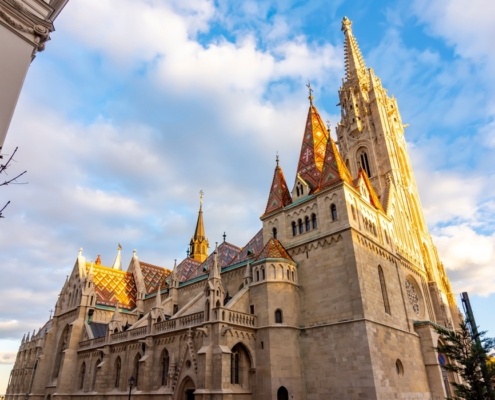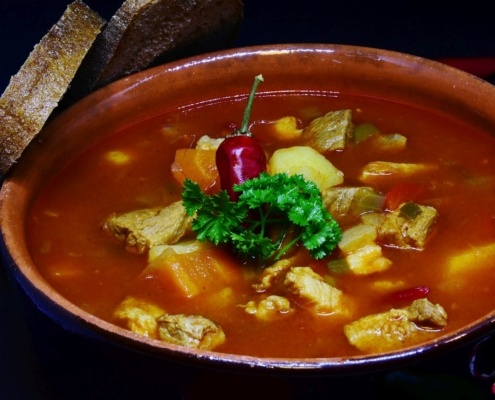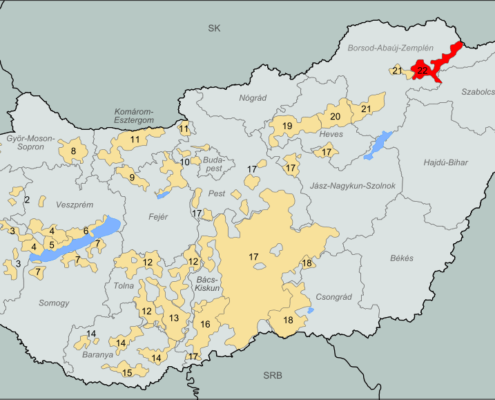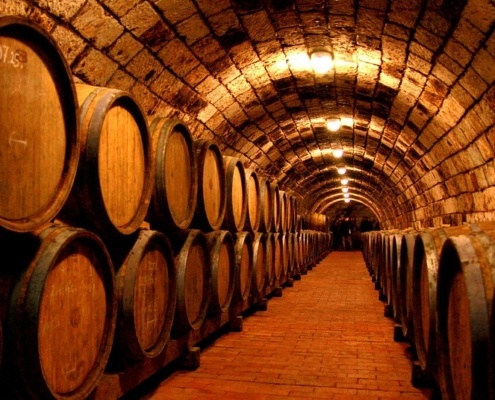3 Reasons to Visit Budapest and Fall in Love with It
Probably nobody needs extra motivation to travel, but sometimes it can be quite challenging to figure out where to go. That is where we the local tourism professionals come in to make decisions easier and give you a better picture of what you can expect if you visit our favorite town. In this article, we delve into the three compelling reasons to visit Budapest and fall in love with it. From the majestic Buda Castle perched on the hills to the lively atmosphere of the ruin pubs in Pest, each facet of the city unveils a unique charm. Embark on a journey through the reasons to visit Budapest and let this European gem cast its spell on you.

1. Timeless Architecture: Historical Reasons to Visit Budapest
Budapest is a city where every corner tells a story. From the grandeur of the Buda Castle to the intricate details of the Parliament Building, the architecture is a testament to the city’s rich history and cultural heritage. Strolling through the streets feels like stepping back in time, with each building whispering tales of the past. Whether you’re exploring the medieval streets of Buda or admiring the elegant boulevards of Pest, Budapest’s architecture is sure to captivate your heart.
Here are the landscapes you should not miss:
Buda Castle: Dominating the city’s skyline, Buda Castle is a UNESCO World Heritage Site and a symbol of Budapest’s history. The castle complex, with its mix of medieval, baroque, and neoclassical architecture, offers stunning views of the city and the Danube River.
Chain Bridge: One of Budapest’s most iconic landmarks, the Chain Bridge spans the Danube River and connects the Buda and Pest sides of the city. Designed by English engineer William Tierney Clark and opened in 1849, it was the first permanent bridge to link the two sides of Budapest.
Parliament Building: Inspired by the British Parliament in London, Budapest’s Parliament Building is a masterpiece of Neo-Gothic architecture. Situated on the Pest side of the Danube, it’s one of the largest legislative buildings in the world.
St. Stephen’s Basilica: Named after Hungary’s first king, St. Stephen’s Basilica is a magnificent example of Neoclassical architecture. Its grand dome and elaborate interior make it one of Budapest’s most beloved landmarks. 1000-year-old mummified right fist of St.Stephen is well preserved.
Dohány Street Synagogue: stands as a monumental symbol of Budapest’s rich Jewish heritage, distinguished by its impressive scale and distinctive architectural style. Characterized by onion-shaped domes adorned with gilded ornamentation, the synagogue exudes an exotic, Moorish-inspired aesthetic. Its pioneering design paved the way for similar synagogues worldwide, making it a pioneering example of this captivating architectural tradition.
Fisherman’s Bastion: Offering panoramic views of the city, Fisherman’s Bastion is a fairy-tale-like structure located on the Buda Castle Hill. Built in the late 19th century, it features seven towers representing the seven Magyar tribes that settled in the Carpathian Basin in the 9th century.
Andrassy Avenue: This elegant boulevard, recognized as a UNESCO World Heritage Site, is lined with grand buildings, luxury boutiques, and cafes. It leads to Heroes’ Square, a monumental complex honoring Hungary’s history and its leaders.

2. Thermal Baths and Relaxation: Wellness Reasons to Visit Budapest
One of Budapest’s most beloved traditions is its thermal baths, offering a sanctuary of relaxation and rejuvenation. With a plethora of thermal springs scattered throughout the city, Budapest has earned its reputation as the “City of Spas.” Whether you’re soaking in the soothing waters of the Széchenyi Baths or unwinding in the opulent surroundings of the Gellért Baths, there’s no better way to unwind after a day of sightseeing. The therapeutic properties of the thermal waters have been cherished for centuries, making Budapest a haven for wellness enthusiasts and weary travelers alike.
Here are some reasons why you should consider visiting thermal baths:
Relaxation and Stress Relief: Thermal baths provide a serene environment where you can unwind and escape the stresses of daily life. The warm mineral-rich waters help relax muscles and alleviate tension, promoting a sense of calm and tranquility.
Improvement of Circulation: The heat from thermal baths dilates blood vessels, which can improve circulation throughout the body. Enhanced blood flow can benefit cardiovascular health and contribute to overall well-being.
Muscle and Joint Pain Relief: Water’s buoyancy and its therapeutic properties can help soothe muscle and joint pain associated with conditions like arthritis, fibromyalgia, and sports injuries. Immersing yourself in warm water can alleviate stiffness and promote healing.
Detoxification: Thermal baths are believed to facilitate the elimination of toxins from the body through sweating and increased circulation. This detoxifying effect can leave you feeling refreshed and revitalized.
Respiratory Benefits: The steam and warm air in thermal baths can have a therapeutic effect on the respiratory system, helping to alleviate symptoms of asthma, bronchitis, and sinusitis.
Social and Cultural Experience: Széchenyi and Rudas Baths host various events and activities, including music performances, water aerobics classes, and special themed parties. These events add an extra layer of entertainment and cultural immersion to the bathing experience. Bathing in any of the Budapest Thermal Baths is a popular pastime for locals, providing an opportunity to interact with Hungarian residents and learn more about their customs and way of life. Engaging in conversation while soaking in the thermal waters is a common occurrence.
Overall, thermal baths offer a holistic experience that promotes physical relaxation, mental rejuvenation, and cultural immersion. Whether you’re seeking relief from aches and pains or simply looking to unwind and pamper yourself, a visit to thermal baths can provide a multitude of benefits for your health and well-being.
Join our daily Free Budapest Tours to learn about the thermal baths in Budapest.

3. Hungarian Cuisine: Tastyiest Reason to Visit Budapest
Falling in love with Hungarian food is a delightful journey into a rich culinary tradition. Food and wine in Hungary offer a unique and vibrant culinary experience that captivates both locals and visitors alike.
Here’s what makes them so cool:
Rich Culinary Heritage: Hungarian cuisine is a melting pot of influences from various cultures, including Turkish, Austrian, and Slavic. Its rich culinary heritage is reflected in a diverse array of dishes that combine bold flavors, hearty ingredients, and unique cooking techniques.
Iconic Dishes: Hungary is home to iconic dishes like goulash (gulyás), a hearty stew made with tender meat, vegetables, and paprika; and paprikash (paprikás), a creamy chicken or veal dish flavored with sweet paprika. These dishes are beloved staples of Hungarian cuisine.
Paprika and Spices: Paprika is a quintessential ingredient in Hungarian cooking, adding vibrant color and robust flavor to many dishes. Hungarian cuisine also makes use of other spices like caraway, garlic, and onion, creating a symphony of flavors that tantalize the taste buds.
Desserts and Pastries: Hungarian desserts are a sweet indulgence that showcases the country’s passion for confectionery. From decadent cakes like Dobos torte and Eszterházy torte to classic pastries like kürtőskalács (chimney cake) and rétes (strudel), Hungary offers a tempting array of treats for those with a sweet tooth.
Take our daily free tours to learn how to explore local markets try seasonal specialties, and learn about food and wine festivals in Budapest.






